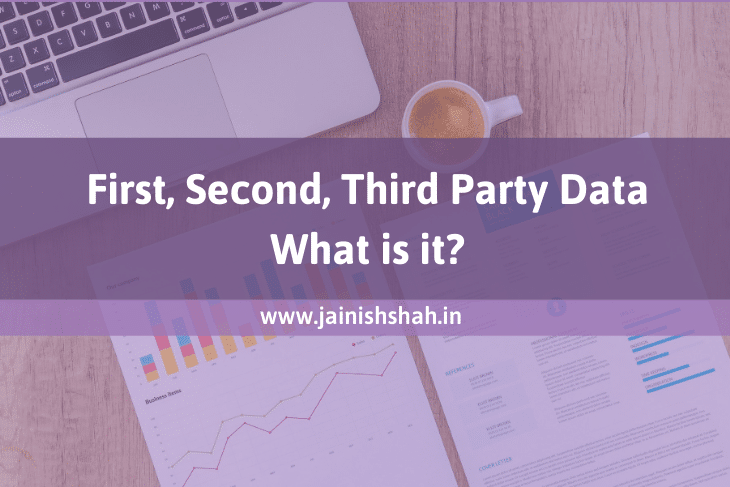We live in a highly digital world today & data plays a critical role in this digital world. If a marketer is able to understand the data well, the marketing campaign would be much more targeted & fetch great results.
Hence, it becomes important to understand the various types of data:
- First Party Data
- Second Party Data
- Third Party Data
Let us explore 1st, 2nd and 3rd party data in detail in this article.
What is First Party Data?
First Party Data is the data that is collected by the company directly from its audience. It can be the data collected by customers, social media followers, website visitors, email subscribers, etc.
This is the most important type of data as it comes directly from the brand’s customers & audience who are interacting with the brand’s social media, website or landing pages.
The brand is not spending any additional money in capturing this data. If the company is not collecting & using this data, it is loosing out a lot. Yes, because anyways the company is having its audience in this digital world.
This type of data is of very high quality & relevant.
First party data can be used to predict customer’s behavior, gain insights, personalize ads, retargeting and much more.
Amazon suggests you products on the basis of your previous purchases & the products that it displays to you are unique to your profile. That’s the power of first party data. It helps in delivering highly personalized experiences.
What is Second Party Data?
Second party data is not your own data but someone else’s first party data. It is coming from an external source. But it is still reliable.
You purchase it from the company for which it is the first party data. Now this means that you must have a relationship with a company that can sell you it’s first party data.
One key thing to remember is that the data is not coming from your audience but from the audience of the company that collected it. This also gives you an insight of the audience of that company from which you purchased it.
A good example of second party data can be coaching institutes collecting data from schools/colleges to understand the students profiles and then trying to promote their institutes to the students and their parents.
This helps them in expanding the customer base & targeting in a much better way.
What is Third Party Data?
Third party data is also purchases from external sources. But the source is also not the first party holder of that data.
They are data aggregators. The aggregators source first party data from other companies, aggregate them and sell it. Hence, it becomes third party data for the ones who purchase it.
Here, you are not only the one who has access to this data. Your competitors might have also purchased it. The difference can be how well are you able to interpret and use the data.
The benefit of third party data is the volume of data. It is a lot of data from a variety of sources. This means the scope is large.
The quality of third party data is much lower than second party data and obviously much more lower than first party data.
Conclusion
It is much obvious that first party data is of high quality. But not all brands can collect and maintain data that effectively.
The data that you need depends on your business goals, type of business and many other factors.
A small company with less affordability will ideally settle with third party data. To a great extent, they would try to purchase second party data. A very few of them might also focus on collecting their own first party data.
A big multi-national would be having it’s own first party data. Despite of that, it would purchase second party and third party data to get better insights.
Also, when talking about data, data regulations play a key role too. Ensure that there is no breach in the regulations & the data is of high quality.
